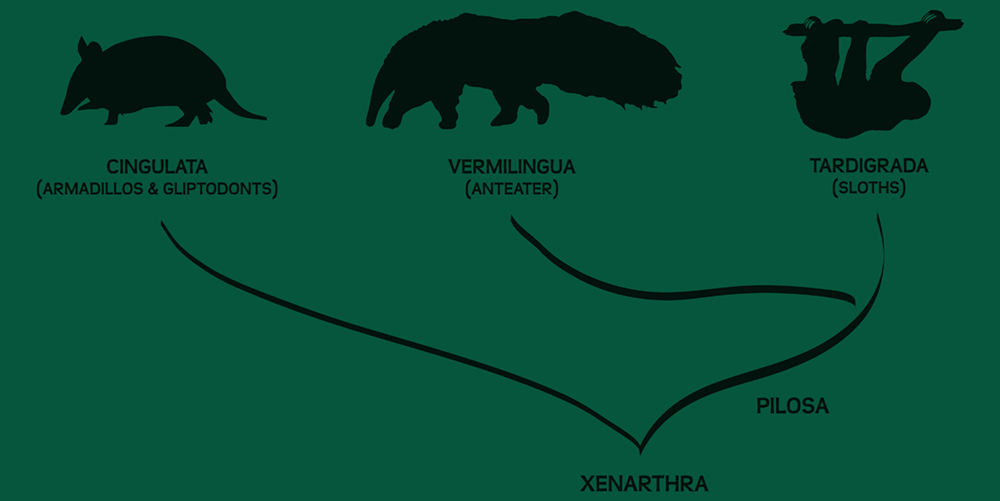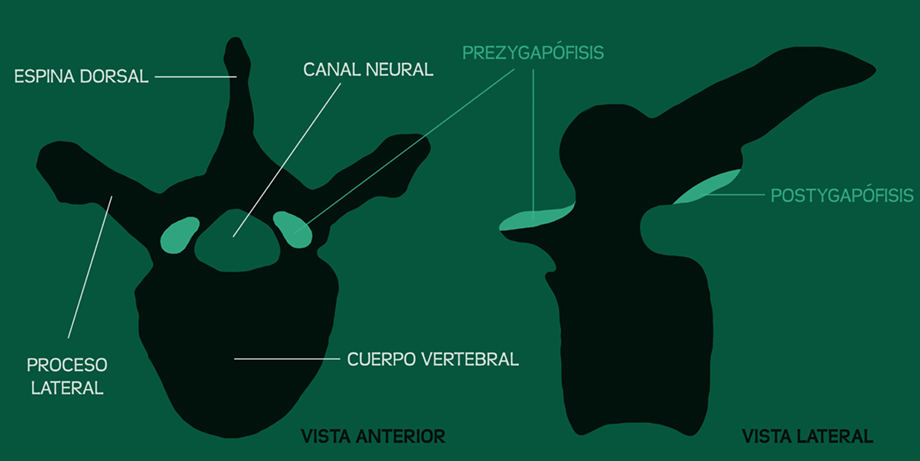Strange vertebrae













0.0 mm
| Plane | Position | Flip |
| Show planes | Show edges |

 Initial view
Initial view
 Zoom In
Zoom In
 Zoom Out
Zoom Out
 Enable light control
Enable light control
 Enable Measure tool
Enable Measure tool
 Enable plane sections
Enable plane sections
 Full screen
Full screen
Drag: Rotate model
Drag + CTRL: Pan model

Xenarthra
Also known as xenarthrans, they are one of the four groups in which placental mammals are divided into – placental mammals being those whose offspring develop for a good time in utero and feed through the placenta. They are native to South America, although they reached Central and North America, as well as the Antilles, a few million years ago, during the Great American Biotic Interchange. Xenarthrans may belong to the orders Cingulata and Pilosa respectively, depending on whether they possess a carapace – like armadillos and glyptodonts – or, as is common in mammals, they have hairy skin – like in the case of living and extinct sloths and anteaters.

Anatomy of the vertebrae
The spine is made up of a series of mobile bones, the vertebrae. This is such an important structure for both support and locomotion that in mammals, it has evolved to have distinctive regions. Cervical vertebrae are located in the neck area, then thoracic ones belong on the thorax, lumbar and sacral ones continue the spine – the latter fuse forming the sacrum – and finally, caudal vertebrae form the tail.
Each vertebra has characteristic parts. The centrum or body is responsible for the support of the spine. The neural canal – through which the spinal cord travels – is limited by the neural arch. From the dorsal part of the arch, the spinous process projects upwards and the transverse processes project laterally. These processes serve as areas for the insertion of the muscles that control and stabilize the spine. A vertebra connects with the one before it and the one after it through the centrum and two pairs of projections; the anterior ones are called prezygapophyses and the posterior ones, postzygapophyses.
-
Anatomy of xenarthral vertebrae
Some xenarthral vertebrae possess a morphological feature that is present in all the groups, the existence of additional joints connecting the vertebrae, the xenarthral joints. This feature is responsible for the name given to the group, since “Xenarthra” is derived from the Greek language and means “strange joints”.
-
Not in every vertebra, not everywhere
The xenarthral joints are not present in every vertebra on the spine, they are located rather posteriorly on the animal’s body. In some groups these joints are present in the last thoracic vertebrae as well as in the lumbar ones, while in others they are found only in the lumbar region. Xenarthral joints are located under the pre and postzygapophyses.
Another peculiarity among the xenarthrans is the differences within their spines. For example, in the neck of the Cingulata – armadillos, pampatheres and glyptodonts – the first vertebrae are fused forming a cervical tube. Glyptodonts were the mammals with the highest degree of fusion in their spines; besides the cervical tube they had a “trivertebral” element formed by the fusion of the first three thoracic vertebrae, followed by a dorsal tube formed by the fusion of nine vertebrae. Also, the lumbar vertebrae formed a synsacrum. There is no vertebral fusion on sloths, although they tend to reduce the amount of lumbar vertebrae to three or even two.





